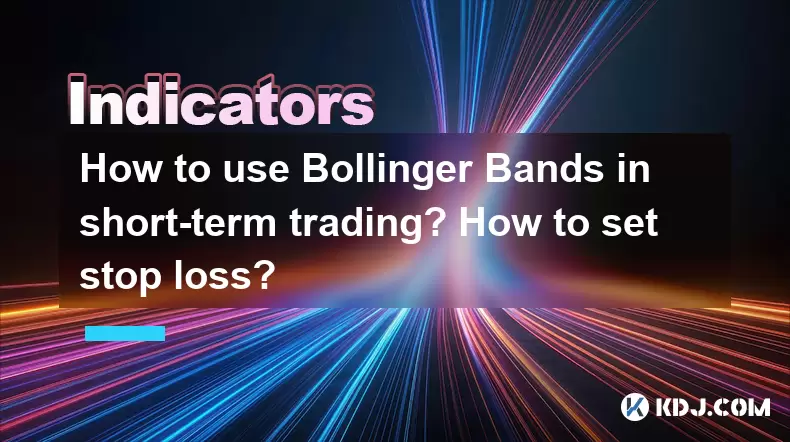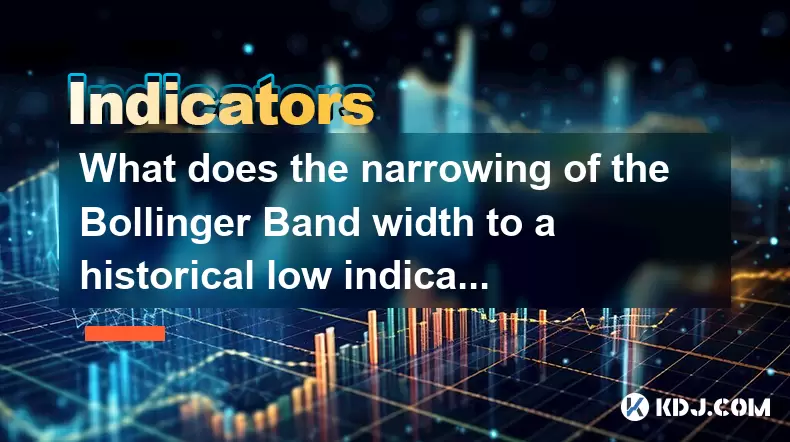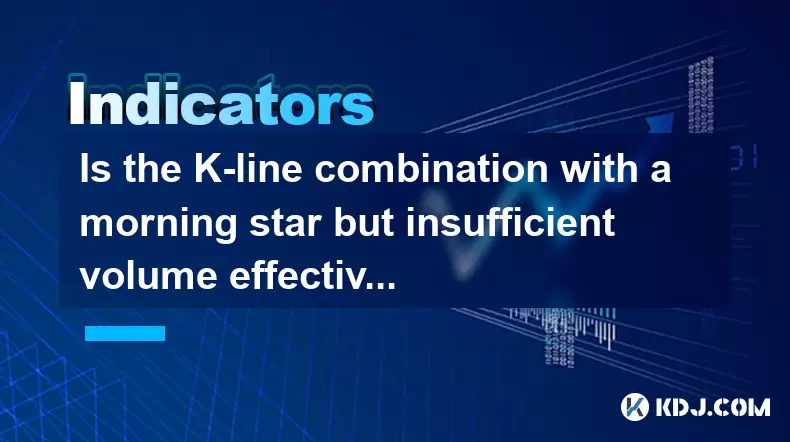-
 Bitcoin
Bitcoin $101,898.5005
-0.75% -
 Ethereum
Ethereum $2,258.1125
-1.07% -
 Tether USDt
Tether USDt $1.0004
0.01% -
 XRP
XRP $2.0178
-2.93% -
 BNB
BNB $624.0243
-1.53% -
 Solana
Solana $134.3298
-0.90% -
 USDC
USDC $0.9999
0.01% -
 TRON
TRON $0.2675
-2.05% -
 Dogecoin
Dogecoin $0.1538
-1.96% -
 Cardano
Cardano $0.5482
-1.11% -
 Hyperliquid
Hyperliquid $35.5636
5.45% -
 Bitcoin Cash
Bitcoin Cash $453.4902
-1.66% -
 Sui
Sui $2.5134
-2.97% -
 UNUS SED LEO
UNUS SED LEO $9.1292
1.77% -
 Chainlink
Chainlink $11.8457
-1.60% -
 Stellar
Stellar $0.2312
-2.73% -
 Avalanche
Avalanche $16.9721
0.29% -
 Toncoin
Toncoin $2.7549
-3.82% -
 Shiba Inu
Shiba Inu $0.0...01081
-1.10% -
 Litecoin
Litecoin $80.8250
-0.71% -
 Hedera
Hedera $0.1374
0.21% -
 Monero
Monero $305.4827
-2.36% -
 Ethena USDe
Ethena USDe $1.0006
0.00% -
 Dai
Dai $1.0000
-0.01% -
 Polkadot
Polkadot $3.2085
-3.12% -
 Bitget Token
Bitget Token $4.0845
-3.13% -
 Uniswap
Uniswap $6.3353
-1.63% -
 Pi
Pi $0.5085
-0.70% -
 Pepe
Pepe $0.0...08913
-3.82% -
 Aave
Aave $232.7090
-0.58%
How to use Bollinger Bands in short-term trading? How to set stop loss?
Bollinger Bands help crypto traders identify overbought/oversold conditions and set stop losses, enhancing short-term trading strategies in volatile markets.
May 22, 2025 at 08:35 pm

Bollinger Bands are a powerful technical analysis tool used by traders to gauge market volatility and potential price movements. In the context of short-term trading within the cryptocurrency market, understanding how to effectively use Bollinger Bands can significantly enhance trading strategies. This article will delve into the application of Bollinger Bands in short-term trading and provide a detailed guide on setting stop losses to manage risk effectively.
Understanding Bollinger Bands
Bollinger Bands are composed of three lines: the middle band, which is typically a simple moving average (SMA); and two outer bands, which are standard deviations away from the middle band. The standard setting for Bollinger Bands is a 20-period SMA with the outer bands set at two standard deviations from the SMA.
In the cryptocurrency market, these bands help traders identify overbought and oversold conditions. When the price touches or moves outside the upper band, it may indicate that the asset is overbought and a potential price reversal could be imminent. Conversely, when the price touches or moves outside the lower band, it may suggest that the asset is oversold, and a price bounce might be expected.
Applying Bollinger Bands in Short-Term Trading
To effectively use Bollinger Bands in short-term trading, traders should focus on the following strategies:
Breakout Trading: When the price breaks out of the upper or lower Bollinger Band, it can signal the start of a new trend. For short-term traders, this can be an opportunity to enter a trade in the direction of the breakout. For instance, if the price breaks above the upper band, a trader might consider going long on the cryptocurrency.
Reversion to the Mean: Bollinger Bands are based on the concept of mean reversion. When the price moves significantly away from the middle band, it often returns to the middle band over time. Traders can use this strategy by buying when the price is near the lower band and selling when it is near the upper band.
Squeeze and Expansion: A Bollinger Band Squeeze occurs when the bands come closer together, indicating low volatility and potential for a significant price move. Conversely, an expansion of the bands signals increased volatility. Short-term traders can use these signals to anticipate larger price movements and adjust their trading strategies accordingly.
Setting Stop Losses with Bollinger Bands
Setting stop losses is crucial in managing risk, especially in the volatile cryptocurrency market. Here's how to set stop losses using Bollinger Bands:
Using the Lower Band: When entering a long position based on a breakout or reversion to the mean strategy, a trader can set a stop loss just below the lower Bollinger Band. This helps protect against significant losses if the price continues to fall.
Using the Upper Band: For short positions, a stop loss can be set just above the upper Bollinger Band to limit losses if the price continues to rise.
Volatility-Based Stop Loss: Since Bollinger Bands are a measure of volatility, traders can also set stop losses based on the distance between the bands. A common method is to set the stop loss at a multiple of the current band width (the distance between the upper and lower bands) away from the entry price.
Practical Example of Using Bollinger Bands in Short-Term Trading
Let's walk through a practical example of using Bollinger Bands for short-term trading in the cryptocurrency market:
Identifying a Trading Opportunity: Suppose a trader is monitoring Bitcoin (BTC) and notices that the price has touched the lower Bollinger Band. The trader interprets this as a potential buying opportunity based on the reversion to the mean strategy.
Entering the Trade: The trader decides to buy BTC at the current price of $30,000.
Setting a Stop Loss: To manage risk, the trader sets a stop loss at $29,000, which is just below the lower Bollinger Band.
Monitoring the Trade: The trader keeps an eye on the price movement and the Bollinger Bands. If the price moves towards the middle band, the trader might consider taking profits or adjusting the stop loss to lock in gains.
Exiting the Trade: If the price reaches the middle band at $31,000, the trader might decide to sell BTC, realizing a profit of $1,000 per BTC.
Adjusting Bollinger Bands Settings for Cryptocurrency Trading
While the standard settings for Bollinger Bands are effective, traders might need to adjust them for the unique characteristics of the cryptocurrency market:
Shortening the Period: Given the high volatility of cryptocurrencies, traders might use a shorter period for the SMA, such as 10 or 15 periods, to make the bands more responsive to price changes.
Adjusting Standard Deviations: Depending on the specific cryptocurrency and market conditions, traders might adjust the number of standard deviations for the outer bands. A setting of 1.5 or 2.5 standard deviations might be more suitable in certain scenarios.
Using Different Moving Averages: Some traders prefer using an exponential moving average (EMA) instead of an SMA for the middle band, as it gives more weight to recent price data and can be more responsive to short-term trends.
Combining Bollinger Bands with Other Indicators
To enhance the effectiveness of Bollinger Bands in short-term trading, traders often combine them with other technical indicators:
Relative Strength Index (RSI): The RSI can help confirm overbought or oversold conditions indicated by Bollinger Bands. If the price is near the upper band and the RSI is above 70, it might reinforce the signal to sell. Conversely, if the price is near the lower band and the RSI is below 30, it might reinforce the signal to buy.
Moving Average Convergence Divergence (MACD): The MACD can provide additional confirmation of trend direction. If the price breaks out of the upper Bollinger Band and the MACD line crosses above the signal line, it might be a strong buy signal.
Volume: High trading volume can confirm the validity of a breakout or reversal signaled by Bollinger Bands. If the price breaks out of the upper band with high volume, it might indicate a strong bullish trend.
Frequently Asked Questions
Q1: Can Bollinger Bands be used for all cryptocurrencies, or are they more effective for certain types?
Bollinger Bands can be used for all cryptocurrencies, but their effectiveness may vary depending on the liquidity and volatility of the specific cryptocurrency. For highly liquid and volatile cryptocurrencies like Bitcoin and Ethereum, Bollinger Bands can be very effective. For less liquid cryptocurrencies, the signals might be less reliable due to wider price spreads and less frequent trading.
Q2: How often should I adjust my Bollinger Bands settings in response to market conditions?
The frequency of adjusting Bollinger Bands settings depends on the trader's strategy and the market's volatility. In highly volatile conditions, traders might need to adjust their settings more frequently to stay responsive to price changes. A good practice is to review and adjust settings at least weekly or whenever there's a significant change in market conditions.
Q3: What are the common pitfalls to avoid when using Bollinger Bands for short-term trading?
Common pitfalls include over-reliance on Bollinger Bands without considering other market factors, entering trades too late after a breakout, and not adjusting stop losses appropriately. Traders should always use Bollinger Bands in conjunction with other indicators and keep a close eye on market conditions to avoid these pitfalls.
Q4: Can Bollinger Bands be used effectively in a bear market, or are they more suited to bull markets?
Bollinger Bands can be used effectively in both bull and bear markets. In a bear market, traders can use the lower band to identify potential buying opportunities during temporary rebounds and the upper band to set short-selling targets. The key is to adjust the strategy based on the prevailing market trend and use other indicators to confirm signals.
Disclaimer:info@kdj.com
The information provided is not trading advice. kdj.com does not assume any responsibility for any investments made based on the information provided in this article. Cryptocurrencies are highly volatile and it is highly recommended that you invest with caution after thorough research!
If you believe that the content used on this website infringes your copyright, please contact us immediately (info@kdj.com) and we will delete it promptly.
- VanEck, Pudgy Penguins, and Nasdaq: A New York Minute on Crypto's Big Moves
- 2025-06-24 01:05:12
- Ripplecoin Cloud Mining: Earn Daily Crypto Rewards?
- 2025-06-24 00:25:13
- SEI Price Prediction: Crypto Analyst Sees Potential Jump to $0.30!
- 2025-06-24 01:05:12
- Dogecoin, Cardano, and Crypto Security: Navigating the Wild West
- 2025-06-24 00:45:12
- Dogecoin Price Analysis and Ozak AI: Riding the Crypto Wave in Style
- 2025-06-24 00:45:12
- Neo Pepe Presale: The Next Big Meme Coin?
- 2025-06-24 00:32:08
Related knowledge

How to interpret that the time-sharing chart shows "volume and price rise together" but the MACD red column shortens?
Jun 24,2025 at 01:08am
Understanding the Concept of 'Volume and Price Rise Together'In cryptocurrency trading, when a time-sharing chart shows that both volume and price rise together, it is typically interpreted as a sign of strong buying pressure. This means more traders are entering long positions, pushing the price higher while increasing the trading volume. This phenomen...

Is it contradictory that the moving average system is arranged in a bullish pattern but the DMI shows a decline in trend strength?
Jun 23,2025 at 11:43pm
Understanding the Moving Average and DMI RelationshipIn cryptocurrency trading, technical analysis plays a crucial role in identifying potential trends and making informed decisions. Two of the most commonly used indicators are the Moving Average (MA) and the Directional Movement Index (DMI). While both tools aim to provide insight into market direction...

How to interpret that the Williams indicator quickly turns back in the overbought area but does not fall below the 50-axis?
Jun 24,2025 at 02:01am
Understanding the Williams %R Indicator in Cryptocurrency TradingThe Williams %R indicator, often referred to as Williams Percent Range, is a momentum oscillator used by traders to identify overbought or oversold conditions in financial markets, including cryptocurrency. It ranges from 0 to -100, where values above -20 are considered overbought and thos...

What is the significance of the gap formed by the gap opening not being filled within five days?
Jun 23,2025 at 09:42pm
Understanding Gaps in Cryptocurrency TradingIn the world of cryptocurrency trading, a gap refers to a situation where the price of an asset jumps from one level to another without any trading activity occurring between those two levels. This often happens over weekends or holidays when the market is closed, and significant news or events occur that impa...

What does the narrowing of the Bollinger Band width to a historical low indicate?
Jun 24,2025 at 02:35am
Understanding Bollinger Bands and Their Role in Technical AnalysisBollinger Bands, developed by John Bollinger in the 1980s, are a popular technical analysis tool used to measure market volatility. They consist of three lines: a simple moving average (SMA) in the center, typically over a 20-period setting, and two outer bands that are set at a standard ...

Is the K-line combination with a morning star but insufficient volume effective?
Jun 24,2025 at 02:49am
Understanding the Morning Star K-line PatternThe morning star is a classic candlestick pattern indicating a potential reversal from a downtrend to an uptrend. It consists of three candles: a large bearish candle, followed by a small-bodied candle (often a doji or spinning top), and then a large bullish candle that closes within the range of the first ca...

How to interpret that the time-sharing chart shows "volume and price rise together" but the MACD red column shortens?
Jun 24,2025 at 01:08am
Understanding the Concept of 'Volume and Price Rise Together'In cryptocurrency trading, when a time-sharing chart shows that both volume and price rise together, it is typically interpreted as a sign of strong buying pressure. This means more traders are entering long positions, pushing the price higher while increasing the trading volume. This phenomen...

Is it contradictory that the moving average system is arranged in a bullish pattern but the DMI shows a decline in trend strength?
Jun 23,2025 at 11:43pm
Understanding the Moving Average and DMI RelationshipIn cryptocurrency trading, technical analysis plays a crucial role in identifying potential trends and making informed decisions. Two of the most commonly used indicators are the Moving Average (MA) and the Directional Movement Index (DMI). While both tools aim to provide insight into market direction...

How to interpret that the Williams indicator quickly turns back in the overbought area but does not fall below the 50-axis?
Jun 24,2025 at 02:01am
Understanding the Williams %R Indicator in Cryptocurrency TradingThe Williams %R indicator, often referred to as Williams Percent Range, is a momentum oscillator used by traders to identify overbought or oversold conditions in financial markets, including cryptocurrency. It ranges from 0 to -100, where values above -20 are considered overbought and thos...

What is the significance of the gap formed by the gap opening not being filled within five days?
Jun 23,2025 at 09:42pm
Understanding Gaps in Cryptocurrency TradingIn the world of cryptocurrency trading, a gap refers to a situation where the price of an asset jumps from one level to another without any trading activity occurring between those two levels. This often happens over weekends or holidays when the market is closed, and significant news or events occur that impa...

What does the narrowing of the Bollinger Band width to a historical low indicate?
Jun 24,2025 at 02:35am
Understanding Bollinger Bands and Their Role in Technical AnalysisBollinger Bands, developed by John Bollinger in the 1980s, are a popular technical analysis tool used to measure market volatility. They consist of three lines: a simple moving average (SMA) in the center, typically over a 20-period setting, and two outer bands that are set at a standard ...

Is the K-line combination with a morning star but insufficient volume effective?
Jun 24,2025 at 02:49am
Understanding the Morning Star K-line PatternThe morning star is a classic candlestick pattern indicating a potential reversal from a downtrend to an uptrend. It consists of three candles: a large bearish candle, followed by a small-bodied candle (often a doji or spinning top), and then a large bullish candle that closes within the range of the first ca...
See all articles
























































































